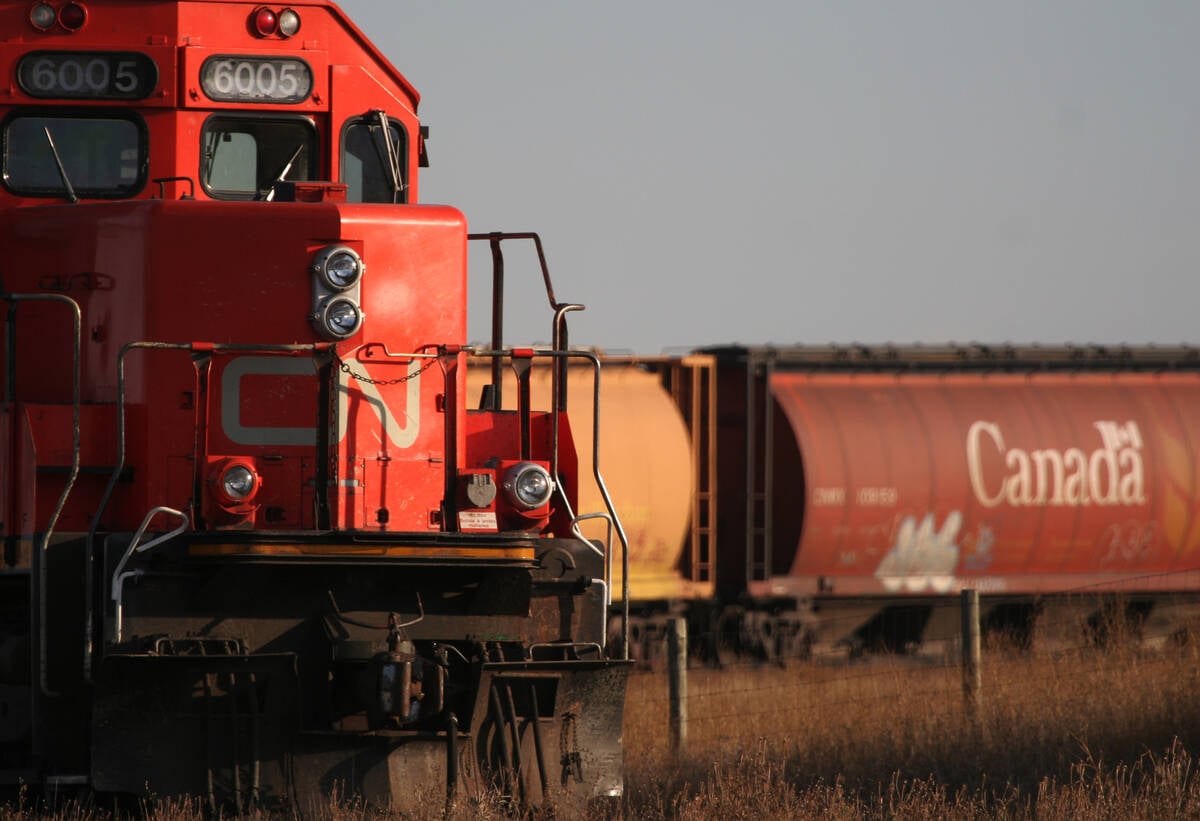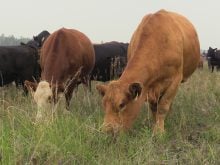This cattle market information is selected from the weekly report from Canfax, a division of the Canadian Cattle Association. More market information, analysis and statistics are available by becoming a Canfax subscriber by calling 403-275-5110 or at www.canfax.ca.
Fed prices rise
Alberta fed steers and heifers last week traded almost $2 per hundredweight higher than the previous week, at $262/cwt and $260/cwt, respectively. Dressed sales ranged from $438 to $440/cwt delivered, which is steady to $6/cwt higher than the previous week.
Read Also

Working groups established to address challenges in the containerized and bulk movement of commodities
CN is working with the pulse and special crops sector on resolving challenges in shipping those commodities.
There was solid competition among packers, although U.S. interest remains light. Last week’s Alberta fed cash-to-futures basis was +$10.63/cwt, which is $2.45/cwt stronger than the previous week and $4.63/cwt stronger compared to the last decade.
Canadian fed slaughter for the week ending May 25 was 41,245 head, down 14 per cent from the previous week and down six per cent from last year. Year to date fed slaughter, at 1,040,117 head, is down 1.7 per cent from last year. Fed slaughter has been running below last year in recent weeks.
Year to date fed cattle and cow exports to the U.S. are up 16 per cent, with weekly volumes dropping from over 10,000 head per week in April to 7,500-8,000 head per week in mid-May.
Dressed sales in Ontario were reported at $407-$415/cwt delivered locally, fully steady with the previous week.
Ongoing negotiations between the union and Cargill have led to cattle being shipped from Eastern Canada to the West for slaughter. This could pressure Alberta fed prices.
In the U.S., trade turned moderately active May 30. Sales were US$185-$186/cwt in the south and $298-$304/cwt in the north. Live sales in Nebraska were $190-$193/cwt.
Live cattle futures moved lower in the second half of the week after this news was announced. Last week’s slaughter was estimated at 540,000 head, down 67,000 head from the previous week and down 28,000 head from the same holiday-short week last year.
Cow prices still strong
Alberta cow prices have strengthened in 18 of the past 20 weeks. Since the start of the year, cow prices have gone from the $120s/cwt to the upper $180s. On a dollar per head basis, that is a change in value of more than $900/head.
Last week D2 cows averaged $189.41/cwt and D3s averaged $170.44. Butcher bulls averaged $204.23.
For the holiday short week, western Canadian cow slaughter was 4,500 head, 22 per cent below last year. It was the fourth consecutive week that cow slaughter volumes were below last year. Year to date Alberta cow prices have been trading at a $5.50/cwt discount against the U.S. market compared to a $1.50/cwt discount last year. One would assume more cows would be headed into the U.S. for slaughter, but that has not been the case.
First quarter slaughter cow exports are down 12 per cent compared to last year. Furthermore, Canadian cow exports to the U.S. from January to March are the smallest since 2018.
Last week, butcher cows in Ontario traded steady to $1/cwt weaker. With Cargill Guelph not slaughtering cattle, more cows from Eastern Canada could go into the U.S. for slaughter. There is also a chance more cows could be slaughtered in Manitoba and Alberta.
Weather boosts outlook
Auction market and electronic volumes for May in the four western provinces are down 33,000 head compared to last year. Last year, dry conditions saw historically large cow-calf pair volumes.
This year cow-calf pair volumes are significantly smaller than a year ago and feeder cattle numbers are smaller as well.
Trading $9/cwt higher this week, 700-800 lb. steers established a new record high. In May, the price slide between an 850 lb. and 950 lb. steer remains historically large. From a value perspective, the feedlot is not paying much on a dollar per head basis to get the extra 100 lb. of weight.
This is the seventh consecutive week that Canadian feeder exports to the U.S. have been over 4,000 head/week. Last week Alberta, Saskatchewan and Manitoba 950-1,000 lb. heifers for September delivery traded from $312-$320/cwt, fully steady with prices seen a month ago. Last year at this time, 950 lb+ heifers for September delivery were trading in the mid $270s/cwt.
Cow-calf pairs traded from $3,575-$5,050/pair, averaging $4,500/pair. Demand for cow-calf pairs is much stronger than last year.
Greener pastures, record high prices for cull cows and a strong outlook for the fall calf market is fueling demand.
Cutouts up slightly
In U.S. beef trade, cutout values were one per cent higher than the previous week. Choice averaged US$314.04/cwt and Select averaged $302.58. Cutouts re-aligned with their mid-March peak.














